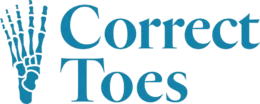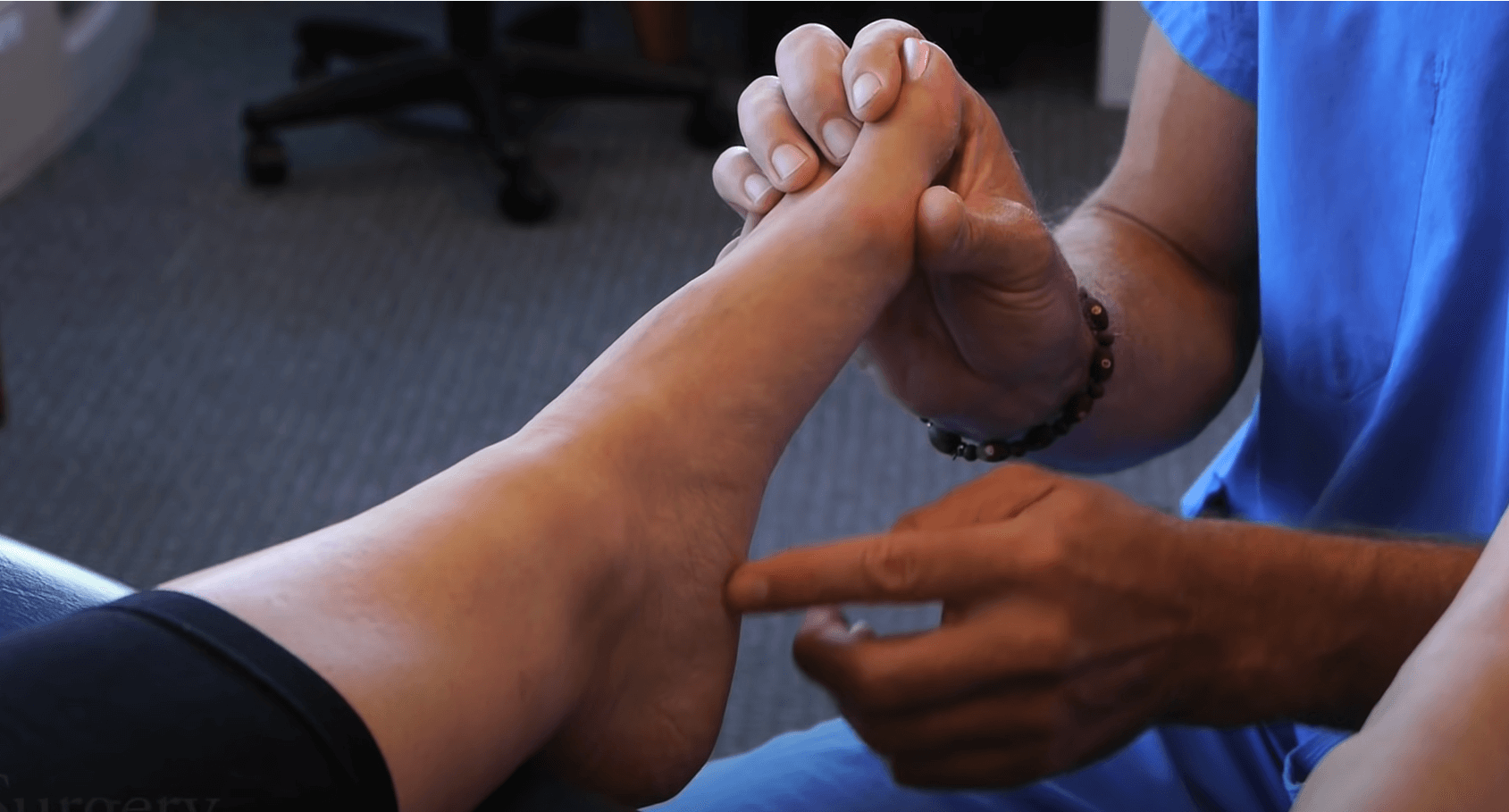Below we present some ideas about feet and footwear that are commonly believed but erroneous. These myths are then dispelled. This information helps to illustrate why Correct Toes toe-spacers, used as a part of a natural treatment approach, can alleviate a wide variety of foot problems.
Myth #1
The foot is inherently misshaped. The way to correct foot problems is by using orthotics or undergoing surgery.
Myth Dispelled
Look at the foot of a young child. You will notice that his or her toes are spaced well apart. The foot of a young child is naturally designed for optimal balance and gait. Their widely spaced toes, along with the ball of their foot and their heel, provide an optimal base of support for their arch. If the foot maintains this shape, optimal stride is preserved through old age. This is what is seen in societies that go barefoot or wear predominantly flip-flops. In industrialized societies however, people spend a life time wearing shoes with rigid soles and tapered toe boxes, a situation which inevitably leads to a change in foot shape. This deformation of the foot by the shoe is what leads to foot, ankle, knee, and other muscle and joint problems. Thus, the foot is NOT naturally misshaped. In most cases, it starts out just right. The way to address most foot and ankle problems, then, is not through use of orthotics or surgeries, but rather by allowing the foot to return to its natural form, with level forefoot and heel, and with the feet’s natural toe splay encouraged.
Myth #2
Athletic shoes are good for feet, because they are flat, they absorb impact, and they support the heel and arch.
Myth Dispelled
Most people know that high heels are more about fashion than function, but what’s wrong with athletic shoes? If you examine footwear designed for sports, you’ll notice that even these shoes elevate the heel, extend the toes, and pinch the toes together. Instead of enhancing performance, this triad of design features actually compromises the natural gait cycle, leading to chronically tight foot and toe extensor muscles and structural changes in the toes themselves (i.e., the toes are forced toward the foot’s midline where they remain, permanently, unless steps are taken to reverse the wedge-shaped toe deformation). The foot functions best as a barefoot, that is, when the heel and forefoot are completely level, and the toes are allowed to flex, extend, and spread.
Myth #3
Foot problems and musculoskeletal problems (such as osteoarthritis) are just a natural part of the human aging process.
Myth Dispelled
It is often heard “I can’t run/walk/stand any more. It’s because I’m getting old.” Foot and musculoskeletal problems are astoundingly common on our modern society. But in fact, they are NOT a natural part of the aging process. Rigid footwear, for reasons explained above, plays a much bigger role in physical degeneration than most people realize. And it certainly contributes more signficantly to foot problems than does the aging process. Remember, in societies that do not use rigid footwear, people don’t suffer nearly the same rate of lower extremity arthritis and foot problems, even well into old age.
Myth #4
Athletic shoes, especially the expensive ones, are designed by physicists or engineers, and are built to optimize movement while maximizing both comfort and foot health.

Myth Dispelled
If only this were true. But the reality is that the shoe market is driven by what “looks good” on the shelf and will therefore sell. This is true not only of dress shoes, but also of athletic shoes. While comfort is considered by shoe designers, foot health is of bottom priority. Indeed, even when shoe designers are presented with findings that flat, wide shoes (widest at the ends of the toes) are optimal for foot function and health, they fail to incorporate this information into their designs, as such a style would be incongruous with the classic and fashionable shoe appearance (and therefore detemintal, they believe, to sales). Additionally, considerably more money can be charged for a shoe that boasts “arch support” or “motion control” than for a simple flat shoe. Take home message: the shoes that are touted to enhance athletic performance actually hinder it by altering natural foot shape and gait and causing foot problems.
Myth #5
“Flat” feet or high-arch feet are problematic. They must be managed with orthotics or other forms of arch support.
Myth Dispelled
Contrary to popular belief, in most cases, the height or length of the foot arch is not the issue. People can have optimal stride with either a high or a low arch. What’s truly important, however, is the base of support. This support is naturally built into the foot, with the heel, forefoot, and evenly spaced toes serving as the ends of the arch. If this natural foot is able to walk without the confinement of narrow, rigid shoes, then external support devices, such as “arch support” insoles or orthotics are NOT required.
Myth #6
Once foot problems are in place (e.g., bunions, neuromas, osteoarthritis, etc), there’s no way to correct them except with surgery.
Myth Dispelled
Most foot and musculoskeletal problems can be treated WITHOUT surgery or pharmaceutical drugs. The approach simply involves returning the foot to its natural shape and allowing it to function in the way that nature intended. Correct Toes help to return the foot to its natural anatomical shape, thereby undoing the damage caused by poorly-designed footwear. Such a treatment approach is coservative and non-invasive and focuses on the underlying cause of dysfunction. In turn, this treatment model provides a long-term solution for those suffering from foot ailments.






